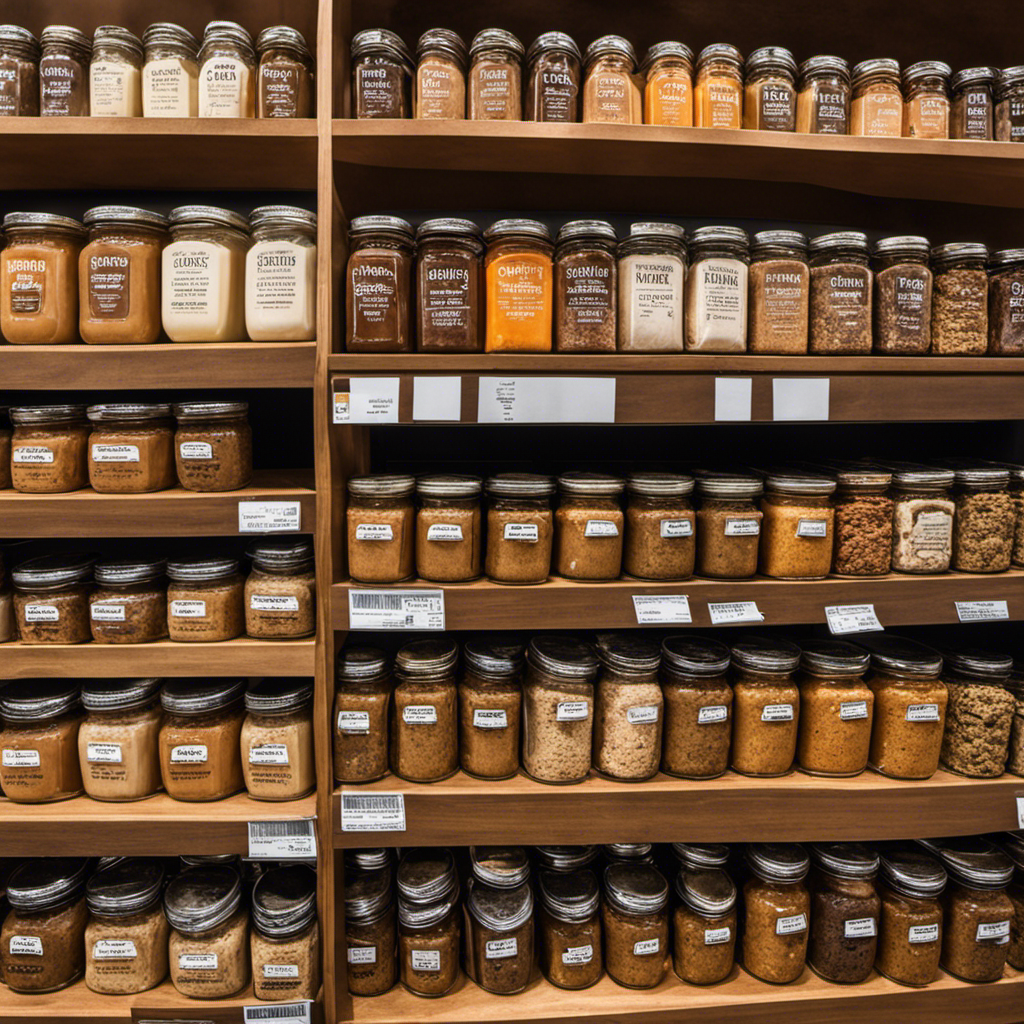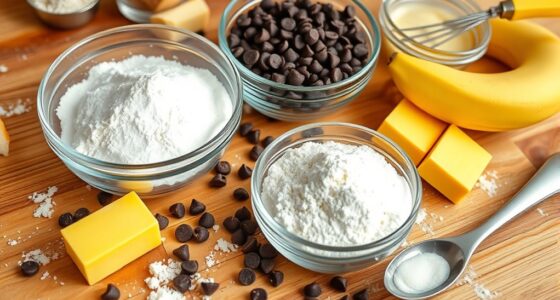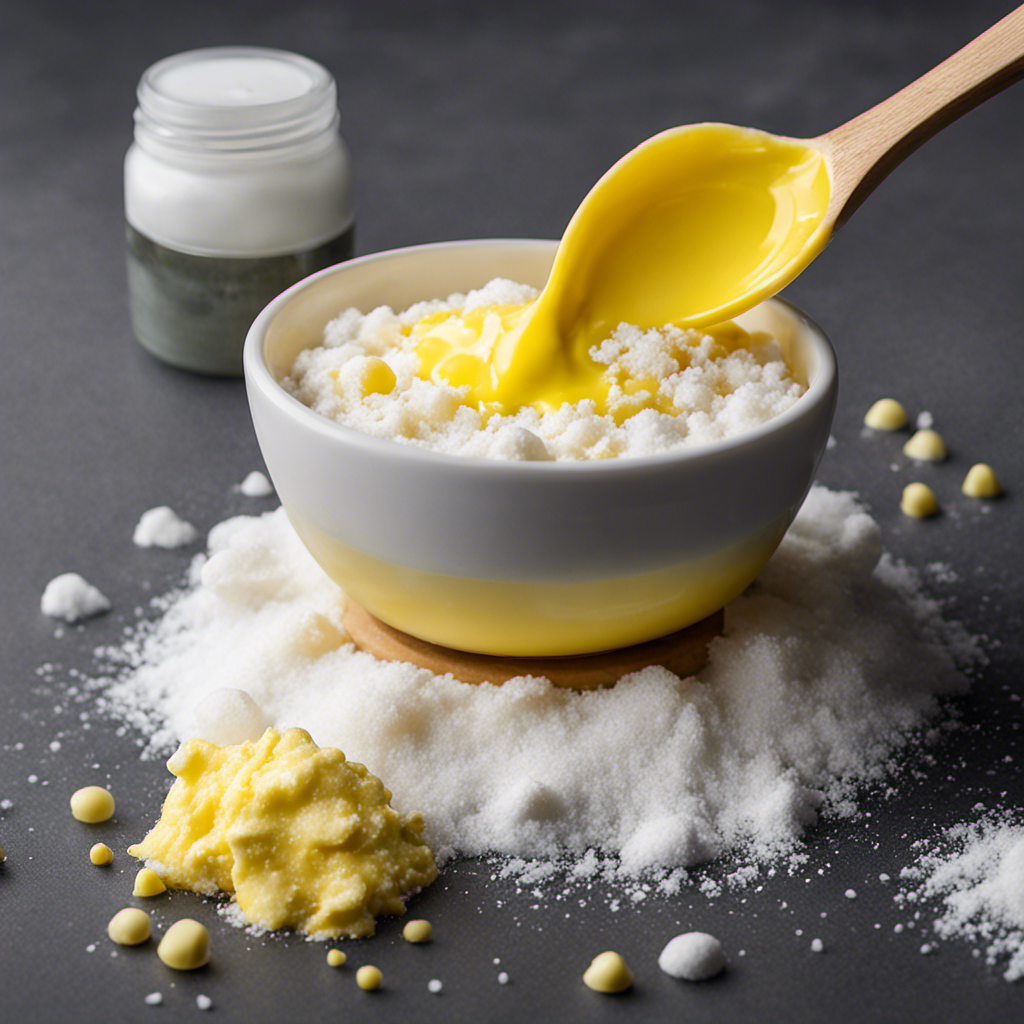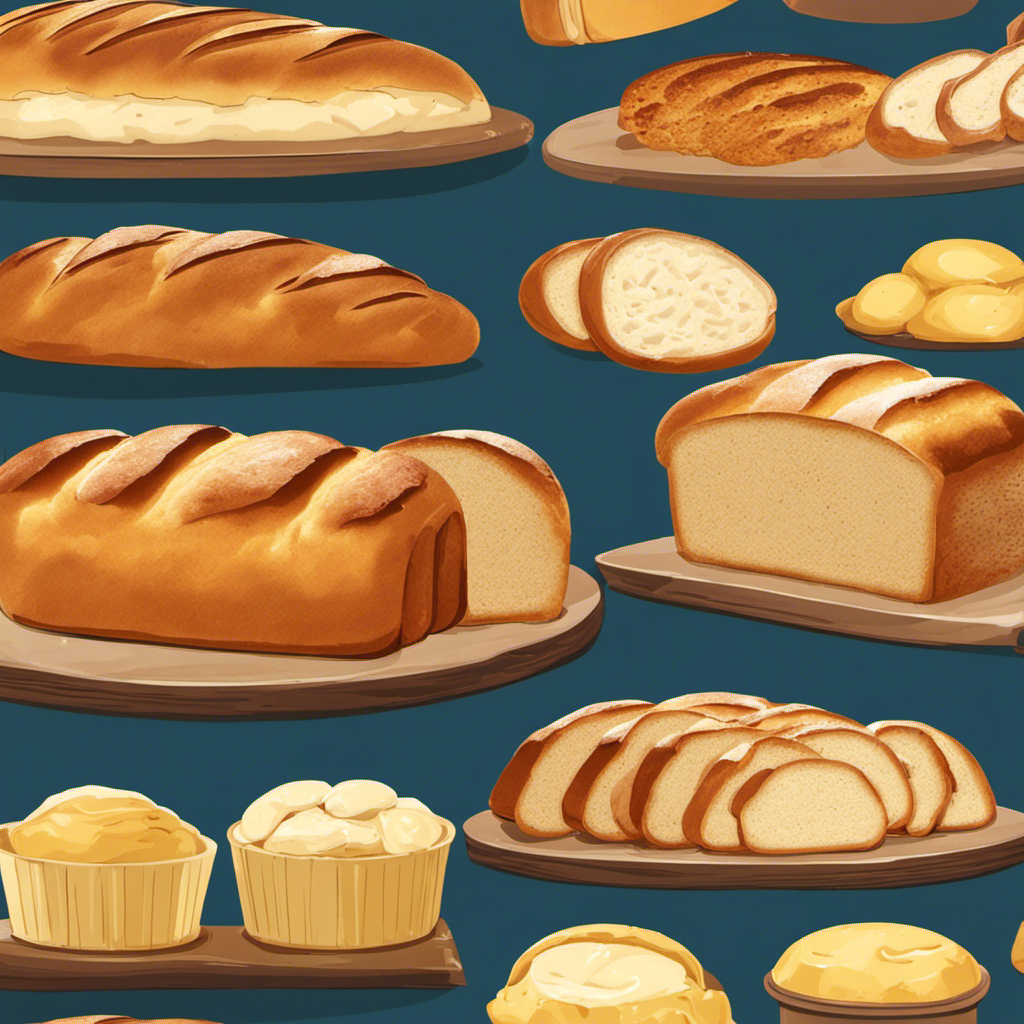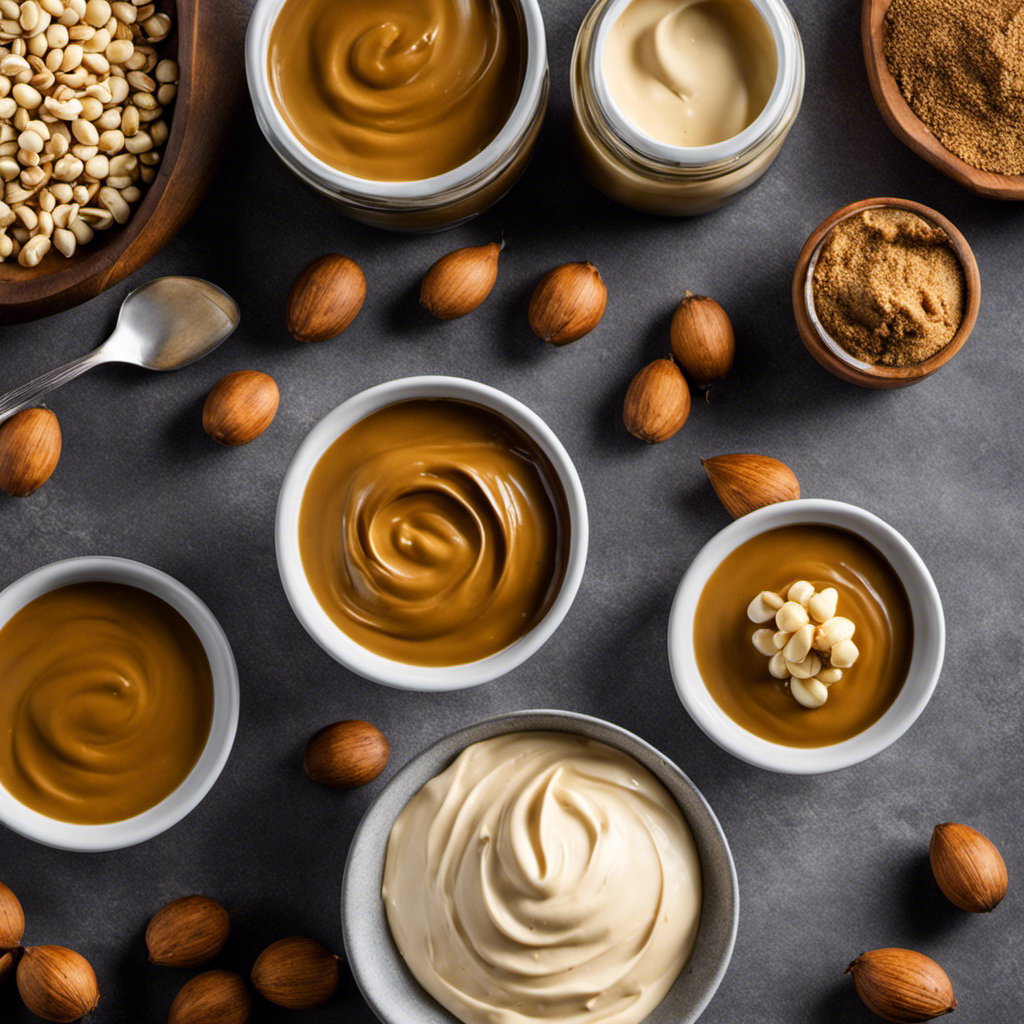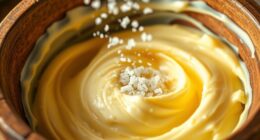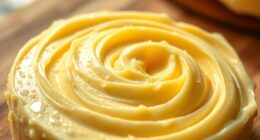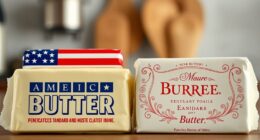After you have finished making that smooth butter, make sure to put the leftover buttermilk to good use! It’s the perfect opportunity to get inventive in the kitchen and discover all the tasty options available.
From fluffy pancakes to tangy dressings, there’s no limit to what you can do with buttermilk. Dive into the world of baking, whip up some biscuits, or add a splash to your favorite soup.
And if you’re feeling adventurous, try blending it into a refreshing smoothie. Get ready to transform your culinary creations with the magic of buttermilk.
Key Takeaways
- Buttermilk can be used in baking to add moisture and tanginess to baked goods.
- It can be used to make fluffy and delicious pancakes and waffles.
- Buttermilk is a key ingredient in making creamy and tangy dressings and sauces.
- It can be used to make fluffy and golden biscuits, which can be enjoyed as a side dish or in various dishes.
Baking With Buttermilk
You can use buttermilk in your baking to add moisture and tanginess to your recipes. Baking with buttermilk is a great way to enhance the flavor and texture of your baked goods.
The acidity of buttermilk helps to activate baking soda, resulting in a lighter and fluffier texture. It also adds a subtle tanginess that pairs well with sweet and savory flavors.
Buttermilk can be used in a variety of recipes, such as cakes, muffins, and biscuits. It can even be used in marinades to tenderize meat and add a delicious tangy flavor.
So the next time you’re in the kitchen, don’t forget to reach for that bottle of buttermilk and get creative with your baking!
Speaking of baking, one classic recipe that uses buttermilk is making buttermilk pancakes.
Making Buttermilk Pancakes
To make buttermilk pancakes, simply mix the leftover buttermilk with flour, sugar, eggs, and baking powder. The result is a fluffy and delicious breakfast treat that will leave you craving for more.
But don’t stop there! Buttermilk can be used in a variety of other recipes to enhance their flavors and textures. Consider making buttermilk waffles, which are equally as light and airy as the pancakes. Or try using buttermilk as a marinade for buttermilk fried chicken, which will give it a tangy and tender taste.
The possibilities are endless when it comes to cooking with buttermilk. So go ahead and experiment with different recipes to discover new and exciting flavors.
Speaking of flavors, another fantastic way to utilize buttermilk is by creating buttermilk dressings and sauces.
Creating Buttermilk Dressings and Sauces
Creating buttermilk dressings and sauces is a great way to add tanginess and creaminess to your salads and dishes. Buttermilk, with its rich and slightly acidic flavor, can elevate your culinary creations to a whole new level. Whether you’re looking for a classic buttermilk ranch dressing or a creamy buttermilk sauce to drizzle over your favorite dish, there are endless possibilities to explore.
Here is a table showcasing some delicious buttermilk dressings and sauces that you can easily make at home:
| Dressings | Sauces |
|---|---|
| Buttermilk Ranch | Creamy Dill |
| Honey Mustard | Lemon Herb |
| Blue Cheese | Chipotle |
| Caesar | Garlic Parmesan |
| Avocado Lime | Spicy Buffalo |
Experiment with different ingredients and flavors to create your own unique buttermilk dressings and sauces. Whether you prefer a tangy and herby dressing or a creamy and spicy sauce, buttermilk is the perfect base to achieve that desired creaminess. So go ahead, get creative in the kitchen and enjoy the delightful tang of buttermilk in your salad dressings and sauces.
Whipping up Buttermilk Biscuits
Whipping up buttermilk biscuits is a delicious way to enjoy the rich and tangy flavor of buttermilk in a fluffy and golden pastry. These mouthwatering biscuits are versatile and can be enjoyed in various ways, making them a staple in any kitchen.
Here are some reasons why you should try making buttermilk biscuits:
- They are incredibly comforting, evoking a sense of warmth and nostalgia.
- The aroma of freshly baked biscuits fills your home, creating a cozy atmosphere.
- Buttermilk biscuits can be enjoyed as a side dish, paired with fried chicken or smothered in gravy.
Buttermilk biscuits are not just for breakfast or brunch. They can be used in alternative ways such as making mini sliders or as a base for strawberry shortcakes. With their light and fluffy texture, these biscuits are sure to satisfy your cravings and impress your guests.
Buttermilk in Soups and Stews
When you add buttermilk to soups and stews, it imparts a creamy and tangy flavor that enhances the overall taste of the dish. Buttermilk is not only a versatile ingredient for biscuits and pancakes, but it can also be used to elevate savory dishes. The acidity in buttermilk helps tenderize meats and adds depth to the broth. Plus, it brings a touch of richness without the heaviness of cream.
Here’s a table showcasing some delicious ways you can incorporate buttermilk into your soups and stews:
| Dish | Buttermilk Addition |
|---|---|
| Creamy Tomato Soup | Add a splash of buttermilk before serving for a velvety texture and tangy kick. |
| Chicken Stew | Marinate the chicken in buttermilk before cooking to make it tender and juicy. |
| Corn Chowder | Incorporate buttermilk into the chowder base for a creamy and slightly tangy twist. |
| Potato Soup | Stir in buttermilk at the end for a creamy and refreshing finish. |
| Beef Stroganoff | Use buttermilk instead of cream for a lighter yet still creamy sauce. |
Using Buttermilk in Marinades and Brines
If you’re looking to take your meat and poultry to the next level, buttermilk can be your secret weapon.
Not only does it have flavor enhancing properties, but it also works as a natural tenderizer.
The acidity in buttermilk helps break down the proteins in the meat, resulting in a more tender and juicy final product.
Flavor Enhancing Properties
Once you’ve made butter, you can use the leftover buttermilk to enhance the flavor of your baked goods. Buttermilk has incredible flavor enhancing properties that can take your recipes to the next level.
Here are three reasons why you should consider using buttermilk in your baking:
-
Tangy and Creamy: Buttermilk adds a delightful tanginess to your baked goods, creating a unique and irresistible flavor profile.
-
Moisture and Tenderness: The acidity in buttermilk tenderizes gluten, resulting in moist and tender cakes, biscuits, and muffins.
-
Health Benefits: Buttermilk is a good source of calcium, potassium, and vitamins. It also contains probiotics that promote a healthy gut and boost your immune system.
Tenderizing Meat and Poultry
Now that you know about the flavor enhancing properties of buttermilk, let’s move on to another great use for it: tenderizing meat and poultry. Buttermilk is a fantastic marinade for tougher cuts of meat because it contains natural acids that help break down tough muscle fibers. This makes the meat more tender and juicy when cooked.
To demonstrate the benefits of marinating with buttermilk, let’s take a look at the following table:
| Tenderizing Technique | Benefits of Marinating |
|---|---|
| Soaking in Buttermilk | – Breaks down tough muscle fibers – Adds flavor to the meat – Helps retain moisture during cooking |
| Using a Buttermilk Marinade | – Tenderizes meat and poultry – Adds a tangy flavor – Enhances juiciness and tenderness |
As you can see, marinating with buttermilk not only tenderizes the meat, but also adds flavor and helps retain moisture. So the next time you have a tough cut of meat, remember to give it a buttermilk bath and enjoy the delicious results.
Buttermilk Smoothies and Shakes
You can make delicious and refreshing smoothies and shakes with the leftover buttermilk. Buttermilk smoothies are not only a great way to use up leftover buttermilk, but they also offer a range of health benefits.
Here are three reasons why you should try making buttermilk smoothies:
-
Boosts Digestion: Buttermilk contains probiotics that promote a healthy gut and aid in digestion. Adding fruits like bananas, berries, or mangoes to your smoothie can further enhance its digestive benefits.
-
Rich in Nutrients: Buttermilk is packed with essential nutrients like calcium, potassium, and vitamin B12. By incorporating buttermilk into your smoothies, you can easily increase your intake of these vital nutrients.
-
Hydrating and Refreshing: Buttermilk smoothies are not only nutritious but also incredibly refreshing. They make for a perfect summer drink that will keep you hydrated and cool.
Now that you know the health benefits of buttermilk smoothies, why not try out some delicious buttermilk smoothie recipes? There are endless possibilities, from classic strawberry buttermilk smoothies to tropical mango and coconut buttermilk shakes.
Don’t let your leftover buttermilk go to waste; whip up a tasty and nutritious smoothie instead!
Conclusion
So there you have it, folks! Now you know what to do with that leftover buttermilk after you’ve made butter. Whether it’s baking delicious treats like pancakes and biscuits, creating tangy dressings and sauces, or adding a creamy twist to soups and stews, buttermilk is a versatile ingredient that shouldn’t go to waste.
Don’t forget about using it in marinades and brines for an extra kick of flavor, or blending it into refreshing smoothies and shakes. So go ahead, get creative in the kitchen and put that buttermilk to good use!
It’s time to whip up some tasty dishes and enjoy the creamy goodness that buttermilk brings. Happy cooking!

